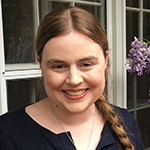About
Project Overview
Envisioning Baroque Rome is a digital humanities project that provides an internet-based, 3D walkable reconstruction of the city of Rome ca. 1676, using the gaming platform Unity. The reconstruction is grounded in Giovanni Battista Falda’s (1643-1678) great bird’s-eye view map of that year, and subsumes the fine detail of over three hundred views of the city etched by the artist. The project enables visitors to enter the map, strolling the streets of the Baroque city as virtual pedestrians: gazing up at church facades that once towered over surrounding buildings, climbing the Capitoline Hill to look down on the tree-lined cattle market that once filled the ancient forum, crossing the Tiber River on the Ponte S. Angelo to explore the long lost portions of the Borgo neighborhood, even entering the Pantheon and following light from the oculus as it moves across the floor. Reconstructed from the map and etchings of a single artist, made over a period of just fifteen years, Envisioning Baroque Rome recaptures piazzas, streets, fountains, and architecture lost to the various urban renewal campaigns of the intervening centuries.
Working Process
In order to “build” Envisioning Baroque Rome, a team of academics, architects, digital artists, and visual information specialists studies Falda’s Rome in map and views, checks Falda’s data against Rome today, against the surveyed map of 1748 by Giovanni Battista Nolli, and against seventeenth-century ichnographic and surveyed maps that survive in the Roman archives. We perform spot research to verify the heights of facades, the material of street surfaces, and the width of piazzas, or to understand the significance of ephemeral sites and structures included in the views and map. We then proceed block by block, façade by façade, to model the individual buildings in three dimensions, cladding them with the textures of Falda’s etchings to create an immersive, walkable, correctly scaled, and detailed version of the Rome that Falda’s etchings have preserved. As we complete each block we document our process: the sources we have used to check Falda’s accuracy, the discoveries we have made when Falda’s etchings contradict one another, the evidence of the map, or the buildings as constructed, and what these divergences teach us about his sources, methods and the architectural history of Baroque Rome.
Project History and Acknowledgments
Many people have contributed to the digital humanities project Envisioning Baroque Rome over the years. The project began with a pilot collaboration between Emory professor and architectural historian Sarah McPhee and architects Erik Lewitt and Jordan Williams of Plexus r+d, and was presented by McPhee to a gathering of architects and architectural historians convened by the Mellon Foundation in 2011.
The first published phase of the project, known as Virtual Rome, was made possible by the sponsorship of the Michael C. Carlos Museum, and was on view in the exhibition Antichità, Teatro, Magnificenza: Renaissance and Baroque Images of Rome in 2013. For this iteration Professor Sarah McPhee led a project team that included Erik Lewitt of Plexus r+d; Joanna Mundy, Graduate Assistant; Nicole Costello, Caleb Fruin, and Michael Musker, digital artists. Virtual Rome was sponsored by the Michael C. Carlos Museum, BULGARI, the Emory Center for Digital Scholarship, an anonymous donor. Vincent J. Buonanno generously supplied the digital images.
In the summer of 2016, Professor Sarah McPhee moved the project to the Emory Center for Digital Scholarship (ECDS). Renamed Envisioning Baroque Rome, the project continued under her direction with a team including Aryabrata Basu, Visual Information Specialist; Joanna Mundy, Graduate Student Assistant; Nicole Costello and Michael Musker, digital artists. In 2023 the project continues to develop with a team now including Joanna Mundy, Digital Projects Specialist; Ian Burr, Visual Design Specialist; John Halbert, Visual Information Specialist; and Nicole Costello, digital artist. Envisioning Baroque Rome has received funding from the ECDS, the Emory Program for Research and Scholarship and from the personal research funds of Sarah McPhee.
Sponsors
Vincent J. Buonanno
BVLGARI
Michael C. Carlos Museum
The Emory Libraries and the Stuart A. Rose Manuscript, Archives, & Rare Book Library
An Anonymous Donor
Emory Center for Digital Scholarship (ECDS): This site has been created with the support of the ECDS.
Project Team:
 Sarah McPhee, Emory University, Samuel Candler Dobbs Professor of Art History. Sarah’s research focuses on Baroque architecture and urbanism, sculpture, and print culture, and her books include: Bernini’s Beloved. A Portrait of Costanza Piccolomini (Yale, 2012), Bernini and the Bell Towers. Architecture and Politics at the Vatican (Yale, 2002), and Filippo Juvarra. Drawings from the Roman Period 1704-1714, Part II, (Rome, 1999). Her current research centers on the Italian etcher Giovanni Battista Falda (1643-1678) and the history of early modern Roman printmaking and cartography. She co-curated an exhibition on this theme, Antichità, Teatro, Magnificenza: Renaissance and Baroque Images of Rome (2013), at the Michael C. Carlos Museum at Emory. She is writing a monograph on the artist and directing the digital humanities project Envisioning Baroque Rome. McPhee‘s work has been recognized by the Guggenheim Foundation, the American Academy in Rome, the Institute for Advanced Study, and the Metropolitan Museum of Art, among others.
Sarah McPhee, Emory University, Samuel Candler Dobbs Professor of Art History. Sarah’s research focuses on Baroque architecture and urbanism, sculpture, and print culture, and her books include: Bernini’s Beloved. A Portrait of Costanza Piccolomini (Yale, 2012), Bernini and the Bell Towers. Architecture and Politics at the Vatican (Yale, 2002), and Filippo Juvarra. Drawings from the Roman Period 1704-1714, Part II, (Rome, 1999). Her current research centers on the Italian etcher Giovanni Battista Falda (1643-1678) and the history of early modern Roman printmaking and cartography. She co-curated an exhibition on this theme, Antichità, Teatro, Magnificenza: Renaissance and Baroque Images of Rome (2013), at the Michael C. Carlos Museum at Emory. She is writing a monograph on the artist and directing the digital humanities project Envisioning Baroque Rome. McPhee‘s work has been recognized by the Guggenheim Foundation, the American Academy in Rome, the Institute for Advanced Study, and the Metropolitan Museum of Art, among others. Joanna Mundy, Emory Center for Digital Scholarship, Digital Projects Specialist. Joanna holds a Ph.D. from Emory University in Art History (2018), specializing in Roman and Greek art and architecture. She developed her interest in digital humanities working for the Emory Art History Visual Resources Library (2007-2010) and has expanded her expertise through her graduate research (2010-2018) and her work for the Emory Center for Digital Scholarship (2015-present). She is the Digital Projects Specialist for Envisioning Baroque Rome, conducting research, composing reports, and maintaining project files.
Joanna Mundy, Emory Center for Digital Scholarship, Digital Projects Specialist. Joanna holds a Ph.D. from Emory University in Art History (2018), specializing in Roman and Greek art and architecture. She developed her interest in digital humanities working for the Emory Art History Visual Resources Library (2007-2010) and has expanded her expertise through her graduate research (2010-2018) and her work for the Emory Center for Digital Scholarship (2015-present). She is the Digital Projects Specialist for Envisioning Baroque Rome, conducting research, composing reports, and maintaining project files. Ian Burr, Emory Center for Digital Scholarship, Visual Design Specialist. Ian makes 3D models and textures for scholarly research. He takes pictures, blueprints, and data and makes 3D visualizations of what things would look like. He holds a B.A. from Emory University in Psychology (2017).
Ian Burr, Emory Center for Digital Scholarship, Visual Design Specialist. Ian makes 3D models and textures for scholarly research. He takes pictures, blueprints, and data and makes 3D visualizations of what things would look like. He holds a B.A. from Emory University in Psychology (2017). John Halbert, Emory Center for Digital Scholarship, Visual Information Specialist. He is lead on management of the Unity project, the 3D environment, and interactive scripting for Envisioning Baroque Rome. He holds a B.A. from The University of Texas at Dallas in Game and Interactive Media Design (2020).
John Halbert, Emory Center for Digital Scholarship, Visual Information Specialist. He is lead on management of the Unity project, the 3D environment, and interactive scripting for Envisioning Baroque Rome. He holds a B.A. from The University of Texas at Dallas in Game and Interactive Media Design (2020).
 Nicole Costello Matthews, consultant, Lead Digital Artist. Nicole has been working as a consultant and lead digital artist on Envisioning Baroque Rome since 2016. She also worked on the first iteration of the project in 2013. She specializes in Maya, Unreal and UDK, Z-brush, Photoshop, Motion builder, and Sihouette. For Envisioning Baroque Rome she creates and textures buildings for the virtual world.
Nicole Costello Matthews, consultant, Lead Digital Artist. Nicole has been working as a consultant and lead digital artist on Envisioning Baroque Rome since 2016. She also worked on the first iteration of the project in 2013. She specializes in Maya, Unreal and UDK, Z-brush, Photoshop, Motion builder, and Sihouette. For Envisioning Baroque Rome she creates and textures buildings for the virtual world.
External Collaborators:
Jasmine Cloud, University of Central Missouri, Jasmine Cloud is Professor of Art History at the University of Central Missouri. Her research on the urban status of the Roman Forum in the sixteenth and seventeenth centuries has appeared in edited volumes such as Eternal Ephemera: The Papal Possesso and its Legacies in Early Modern Rome (2020), and in Oxford Bibliographies with an essay entitled “Ceremonial Entries in Early Modern Europe.” She has also published on the Byzantine spolia of San Marco in Venice. She is currently finishing a book, Processions in the Early Modern Forum Romanum: Ritual and Remembrance in the Urban Landscape of Rome, to be published in 2024.
Bud Roach, University of Toronto, Bud Roach is a doctoral student in the Doctor of Musical Arts program at the University of Toronto. He is a tenor, and is continuing his exploration of self-accompanied performance practice with the theorbo and baroque guitar.
Student Participants:
Lis Dautaj, UG, 3D modeling, 2022.
Abbey Hafer, G, Research and Report, 2021.
Tyler Holman, G, Research, 2022-2023.
Saakshi Kale, G, Image work, 2024-2025.
Audrey Lin, G, Research, 2022-2025.
Leo Liu, UG, 3D modeling, 2024-2025.
Kelin Michael, G, Research and Report (pending), 2021.
Yifei Ren, UG, 3D modeling and Research, 2022-2023.
Aviva Wright, UG, Research, 2023.
Envisioning Baroque Rome, Fall 2017 Class: Abbey Hafer (G), Annie Maloney (G), Anna McKittrick (G), Kelin Michael (G), Emma de Jong (G)
Envisioning Baroque Rome, Spring 2022 Class: Frances Aldana (UG), Christopher Askew (G), Raquel Belden (G), Harrison Campbell (UG), Tyler Holman (G), Dallas Lim (UG), Eleanor Ma (UG), Iain MacKay (G), Ketty Mora (G), Yifei Rin (UG), Elyse Toder (UG), Olivia Willingham (UG)
Envisioning Baroque Rome, Spring 2025 Class: Emily Edison (G), Joseph Rowley (G), Rainey Wise (UG)
Past Participants:
 Arya Basu, Emory Center for Digital Scholarship, Visual Information Specialist. In this role he creates, modifies, and configures 3D models using a variety of computer modeling, simulation software, and geospatial data. In partnership with faculty and ECDS staff, Basu prepares aesthetically composed digital media through graphic design, image processing, and data visualization for use in ECDS-supported projects. He also researches and explores new methods of visualizing data, including 3D, virtual reality, and augmented reality. For Envisioning Baroque Rome, Basu manages the Unity files, creates the base map in AutoCad, introduces topography, imports models and streetscapes, and improves functionality.
Arya Basu, Emory Center for Digital Scholarship, Visual Information Specialist. In this role he creates, modifies, and configures 3D models using a variety of computer modeling, simulation software, and geospatial data. In partnership with faculty and ECDS staff, Basu prepares aesthetically composed digital media through graphic design, image processing, and data visualization for use in ECDS-supported projects. He also researches and explores new methods of visualizing data, including 3D, virtual reality, and augmented reality. For Envisioning Baroque Rome, Basu manages the Unity files, creates the base map in AutoCad, introduces topography, imports models and streetscapes, and improves functionality.
Erik Lewitt, Plexus r+d – Digital Artist and Architect
Caleb Fruin, consultant – Digital Artist
Michael Musker, consultant – Digital Artist



